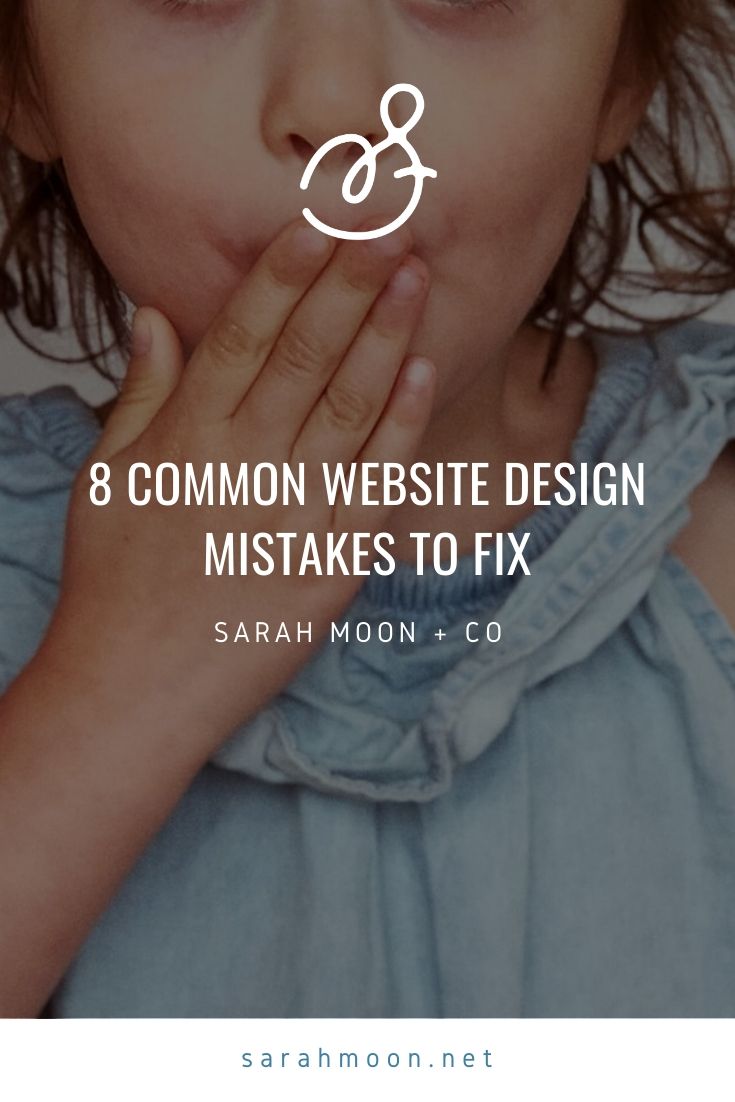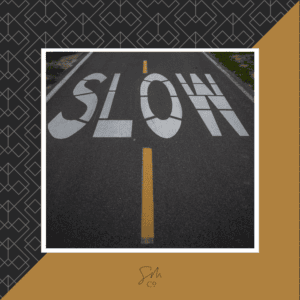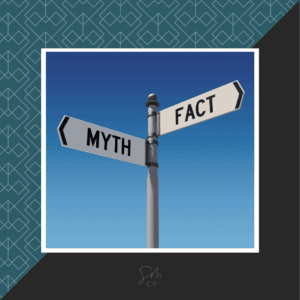We look at A LOT—and I mean A LOT—of websites. It’s part of the job to look at sites and analyze what’s working, what’s not and how to fix it. A lot of the problems we see are rooted in either design trends on the brand side, in which an agency thinks about brands outside of how it will function or they’re rooted in forgetting how people use the internet, that it’s something we consume on all kinds of devices, with all kinds of connections.
Website design mistake #1: Low contrast colors.
Why: This is a huge problem and a design trend we’re still seeing from brand designers who do beautiful work, but forget that real humans need to be able to read the content. Think about your colors and if someone can read it at a distance or if they have low vision.

Website design mistake #2: Using images when you should use text.
Why: On small screens, this is a mess. If you want to be found organically, you want to be sure your text is really text and not an image. We see this a lot on Squarespace sites because of the limited font options. There are workarounds, so speak to your designer if you need special font treatments. However, also take a long hard look at the possible reality that you’re using too many fonts and it’s making your site look cluttered.
Website design mistake #3: “Cute” or “clever” navigation titles.
Why: Admittedly some brands can get away with this, but you have to do so knowing that you could be confusing people or even annoying them. This is generally a bad thing (though, again, if your brand is very sassy, you may be able to get away with it). Make sure your navigation is clear and won’t confuse your ideal audience.
Website design mistake #4: Too small of typography.
Why: I realize this seems obvious, but we still see this all the time. Again, this can often come from brand designers who were thinking about print and not digital (though I’d argue that it matters a lot in print too). You only have a moment to capture people’s attention, so if they literally cannot see the text, this is a bit problem. I always recommend 15px at a minimum for website text.
Website design mistake #5: Too much spacing between letters.
Why: This is a trend that cannot go away soon enough. It looks cool on desktop, but terrible on mobile screens, as words will spread across multiple lines. While you can manually code in different letter spacing for different screen sizes, you run the risk of creating a big mess, making everything look off, and bloating your site with code on top of it. We see this a lot on Squarespace sites because they have a few templates that make this very mistake, leading their customers to believe that it’s a-okay. This is also a trend borrowed from the print world that doesn’t translate well. We recommend a reasonable letter spacing for all text—save the extreme spacing for your logo.
Website design mistake #6: Not adjusting spacing for the typography.
Why: This is related to the issue above. If your brand uses a typeface that’s elaborate, you’ll want to ensure that it has a bit of breathing room around it by adjusting the letter spacing so it’s readable on the web. Again, this is an area where print and digital can bump up against each other, so talk to your brand and web designers about how to ensure readability in different mediums.
Website design mistake #7: Too much animation.
Why: We all love a bit of movement and fun on a website—who doesn’t? But, with great power comes great responsibility and we see way too many websites with animations everywhere! Please make sure that your animations aren’t creating a jarring or weird experience for your users. They should draw attention to important concepts, not scream “I JUST MOVED!”
Website design mistake #8: Too many PDFs and documents.
Why: This just squeaks by under the design heading, because it’s more under the content design umbrella. But, it is a design issue as well. We see a lot of people—nonprofits being a common one—housing information in PDFs that should either 1) be actual content on the website or 2) should not be on the website at all. So next time you think about offering a document for download, think about if it’s something better being something you personally send to people after a phone call and remove it from your website or if it should be a blog post or similar. Lots of downloads can create an unpleasant user experience and on mobile it’s a straight up nightmare.






 & Our Favorite Portland Coffee Shops
& Our Favorite Portland Coffee Shops